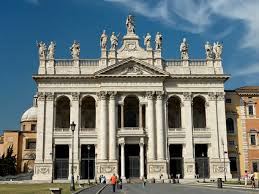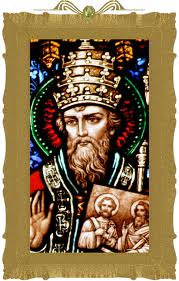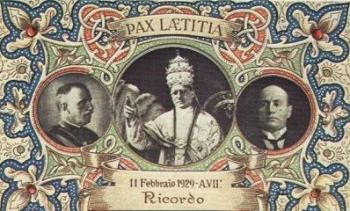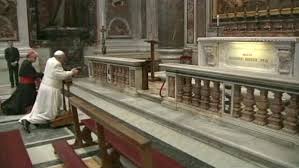
GOSPEL Text John 2:13-22
v 13. Just before the Jewish Passover Jesus went up to Jerusalem,
v 14. and in the Temple he found people selling cattle and  sheep and pigeons, and the money changers sitting at their counters there.
sheep and pigeons, and the money changers sitting at their counters there.
v 15. Making a whip out of some cord, he drove them all out of the Temple, cattle and sheep as well, scattered the money changers’ coins, knocked their tables over
v 16. and he said to the pigeon-sellers,
‘Take all this out of here and stop turning my Father’s house into a market’.
v 17. Then his disciples remembered the words of scripture: Zeal for your house will devour me.
v 18.The Jews intervened and said, ‘What sign can you show us to justify what you have done?’
v 19. Jesus answered, ‘Destroy this sanctuary, and in three days I will raise it up’.
v.20. The Jews replied, ‘It has taken forty-six years to build this sanctuary: are you going to raise it up in three days?’
v.21. But he was speaking of the sanctuary that was his body,
v 22. and when Jesus rose from the dead, his disciples remembered that he had said this, and they believed the scripture and the words he had said.
********************
Gospel Reflection by Fr. Martin Hogan
The Basilica of Saint John Lateran in Rome is the Cathedral church of the Pope in his role as Bishop of the Diocese of Rome. It is called ‘Saint John’ after the two monasteries once attached, dedicated to Saint John the apostle and Saint John the Baptist. As the Cathedral Church of the Pope it has the title ‘Mother and Head of all the churches of the City and of the World’. It is sometimes called the Lateran Basilica or the Basilica of Saint John Lateran. The ‘Laterani’ were an old Roman family who probably once owned the land on which the Emperor Constantine, the first Christian Emperor, built this Basilica in the early decades of the fourth century. The present Basilica retains the plan given to it by Constantine but it has been rebuilt and restored over the centuries.
It is one of the most important religious buildings in the Catholic Church. The most important religious building in the time of Jesus and the early church was the Jewish Temple in Jerusalem. In the words of today’s responsorial psalm, it was ‘the holy place where the Most High dwells. God is within, it cannot be shaken’. At a time when this Temple was still standing in all its glory, Paul, writing to the church in Corinth, makes the extraordinary statement in today’s second reading, ‘Don’t you realize that you are God’s Temple and that the Spirit of God is living among you?’ Paul is declaring that the Most High now dwells in the community of believers who gather around the risen Lord.
The focal point of God’s presence is no longer a building, no matter how magnificent, but the community of those who have responded in faith to the preaching of the gospel of Christ crucified and risen. Paul declares that the foundation of this building is the one he has laid, namely, Jesus Christ. If someone came along and tried to replace that foundation with another, the church would no longer be the focal point of God’s presence in the world. In today’s gospel reading from John, which was written perhaps thirty years after the Jewish Temple was destroyed by the Romans, Jesus speaks of himself as the temple of God, the focal point of God’s presence. The Word who was God became flesh in Jesus; to see Jesus is to see God the Father. The risen Lord is the primary temple of God and the church can only be God’s temple if the risen Lord remains its foundation. As individual believers, we can only mediate God’s presence to our world to the extent that we allow his Son, our risen Lord, to live out his life in and through us.
Summary: Dedication of St John Lateran Basilica. This Papal Archbasilica of St John was dedicated to Christ the Saviour in the fourth century. The anniversary has been celebrated as a feast of the Latin Church on this date since the twelfth century. It honours the local Church of Rome as a link with earliest Christian tradition and as a sign of our communion in Christ.
Although the Pope lives in the Vatican and in the shadow of St Peter’s Basilica, the  Basilica of St John Lateran is The Cathedral of the Most Holy Saviour and of Saints John the Baptist and the Evangelist in the Lateran is also known as the Papal Archbasilica of Saint John.
Basilica of St John Lateran is The Cathedral of the Most Holy Saviour and of Saints John the Baptist and the Evangelist in the Lateran is also known as the Papal Archbasilica of Saint John.
*It is considered the mother church of the Roman Catholic faithful, traditionally the Pope’s church,
*the cathedral church of the diocese of Rome, where the Bishop of Rome presided in the ‘old days’.
*The pope is still it’s bishop.
* It has as its patrons St John the Evangelist and St John the Baptist.
*This cathedral is the seat of papal authority and therefore is, in a sense, the parish church of Catholics everywhere. The baptistry is adjacent to the basilica.
*Since the 7th century it has also been known as the Basilica of the Most Holy Saviour.
Patrick Duffy provides some of it’s brief history.
The Lateran Palace
The Lateran Palace in Rome originally belonged to the Laterani family, who served as administrators to several emperors, but Nero confiscated it. When Constantine became emperor, he built the Latern Basilica in the fourth century on land that had belonged to the Laterani family (hence the name ‘Lateran’). he gave it over to the Church for a synod and the cathedral of Rome – and a basilica
The Basilica
‘Basilica’ is the word given to an early form of building used for Christian worship. It was modelled on the Roman Basilica – a building used as a law court and a commercial exchange. At first the name ‘basilica’ was used of churches which resembled the Roman building, but now the title of ‘basilica’ is given by the pope to certain privileged churches both in Rome and throughout the world.
Pope Sylvester I (314-335) then had the basilica (which literally means a royal hall for transacting business or legal matters) of the house extended and it functioned as a church. It soon became the cathedral of the Church of Rome and the seat of the popes for a thousand years. It was the residence of the popes until 1308. Ecumenical councils, all called Lateran, were held there: in 1123, 1139, 1179, 1215 and 1512-17. While the popes were absent from Rome in Avignon (1305-1403), the Basilica fell into disrepair. The popes did not return to live there, but resided first at the Basilica of Santa Maria in Trastevere, then at the Basilica of Saint Mary Major, and lastly at the Vatican.
Restoration
The palace was restored by Pope Sixtus V (Felice Peretti 1585-90). Pope Innocent X (Giovanni Battista Pamphili 1644-55) commissioned the present structure of the basilica in 1646 and Pope Clement XII (Lorenzo Corsini 1730-40) gave it a grand new façade in 1735.

(This is a souvenir copy of the creation of the Vatican State by the Lateran Pacts. Its “trinity” of King Victor Emmanuel III, Pope Pius XI and Benito Mussolini.)
The Lateran Treaty 1929
In 1929 the Lateran Treaty was signed in the Lateran Palace by Mussolini and Secretary of State Cardinal Pietro Gasparri. Today the palace houses the Vicariate and offices of the diocese of Rome which Pope John XXIII located there.

Bishop of Rome, and Pope of the Universal Church, Pope Francis prays in his parish Church, the Lateran Basilica
The Basilica Today
St. John Lateran is the cathedral of the diocese of Rome where the Bishop of Rome presides, especially on Holy Thursday for the Chrism Mass. One of Rome’s most imposing churches, the Lateran’s towering facade is crowned with 15 colossal statues – Christ, John the Baptist, John the Evangelist and 12 doctors of the Church. Beneath its high altar rest the remains of the small wooden table on which tradition holds St. Peter himself celebrated Mass.
Relevance of the Feast
We are all members of our own local church, work for he universal kingdom of Christ, are also members of this “mother-church” in Rome.
The dedication of churches can be traced back to the Jewish practice of dedicating the Temple in Jerusalem to God. Once the Temple had been dedicated, there was a feast each year to celebrate the anniversary of the dedication. This feast was celebrated not only in Jerusalem but in every synagogue as well. Similarly, every Western Catholic church observes the dedication of the Lateran Basilica in Rome.
This feast helps us move beyond our narrow geographical confines to a sense of the universal Church. See also 18th November, the Dedication of the Churches of St Peter and St Paul.
____________________________________
******************************
Memorable Advice for Today
Stop looking for the perfect church.
It does not exist. Even if it did exist,
the moment you or I joined it ,
it would no longer be perfect.
~Nicky Gumbel ~
******************************